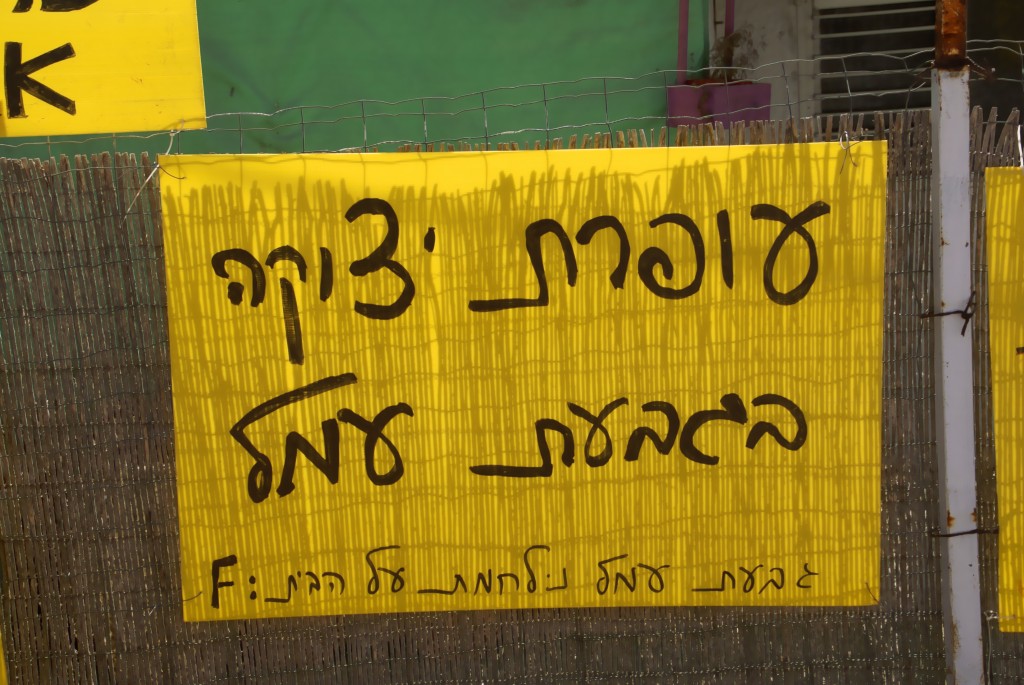After having breakfast, we headed out to explore the demolished Palestinian villages of Tel Aviv. Eitan and Eleonore took us first to the Palestinian village of Jammasin al-Gharbi in what was now called the neighbourhood Giv’at Amal in northern Tel Aviv.
But first, a bit about Mizrahi Jews
The current and recent occupants of the houses in the village are Arab Jews; descendants of Jews from Iraq, Yemen and Morocco. They are referred to as Mizrahi Jews. We knew something about Mizrahi Jews from a talk we had recently attended. The talk was given by a Mizrahi lawyer from Iran that focused on the history and treatment of Mizrahi Jews inside of Israel as not being overly favourable. The talk also focused on the Mizrahi support for Shas. The party, like other parties, often trades its support in coalition governments to further its agenda. The lawyer had talked about Mizrahi Jews taking positions that tended to go to extremes to fit-in and hide or minimize their Arab heritage.
When it comes to Palestine, Shas has reversed its founder’s position of lives being more important that land. It now supports continued expansion of settlements.
Meanwhile, back at the demolished Palestinian village
Our entry into the camp was cautious. Eitan had taken the time to prepare us with some background information regarding the battle this community was engaged in over the land their houses sat on. He warned that the people we met in this area may be hostile to outsiders or may be welcoming. He also asked me not to take pictures without getting permission.
We followed Eitan as he walked up to a group of people sitting around in a semi-circle under the shade of a tree. It would be easy to mistake these people for campers gathered around in front of someones trailer enjoying the early afternoon sun. There was a table off to the side with bottles of liquid and what appeared to be bags of snacks. Across from where these people sat, there was a canopy and under the canopy a pile of mattresses and a table with chairs. Turns out it wasn’t a campsite. It was the home they had built for themselves after being thrown out of their homes.
Eitan began talking to the group. It wasn’t long before one of the members of the group, Menashe Khalif, stepped forward and began answering Eitan’s questions. The answers to the questions turned into a history of the village, it’s former and present occupants, as well as the occupation itself. Eitan asked Menashe if he could record the conversation. Menashe was only too happy to oblige. He was desperate to get his story out, his story of dispossession. He wanted the world to know about the theft of the homes from him and the others that sat around the table by a power that was greater than them.
Signage in and around Giv’at Amal/Jammasin al-Gharbi




